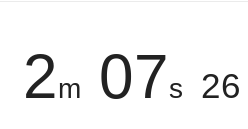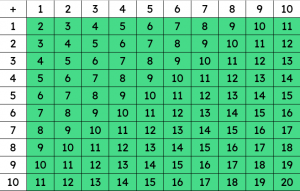I did Basic Facts Boxes.
I got 100/100 in 2m and 07s.
I enjoyed doing this math. I did well on the timer. I need to improve of getting faster.

I did Basic Facts Boxes.
I got 100/100 in 2m and 07s.
I enjoyed doing this math. I did well on the timer. I need to improve of getting faster.

I did Basic Facts Boxes.
I got 100/100 in 2m and 07s.
I enjoyed doing this math. I did well on the timer. I need to improve of getting faster.

Next I had to ask the shooter’s to shoot at the cans to see who is the better shooter. For example : If the boy hits only 2 cans they might win but if the girls hit more than the boys they are the winner.
Lastly I had to write down on the spreedsheet what to organised. For example : I want to organised the tables so the cans could place their, cans so they can shoot down the cans to see whos the better player, Organised the year group together 4, 5, and 6, Organised the stance, and Organised the target.
This week I did add and subtract fractions with the same denomiarator.
How to add and subtract fractions with the same denomiarator? We have to pratise adding and subtract fractions with the same denomiarator using additon problem and subtraction problem.
These are some of the fractions : 1/4+1/4= 2/4 1/5+2/5= 3/5 1/2+1/2= 2/2 2/3+1/3= 3/3
You have one quarter of a pizza. Your friend has one quarter of a pizza. How much pizza do you both have together?
In the morning you ate four sixths of an orange. In the afternoon you shared another orange and ate three sixths. What fraction of the oranges did you eat?
At today’s PE lesson, Mr Wong handed out three eighths of the tennis balls to the boys and three eighths of the balls to the girls. What fraction of the tennis balls is the class using?
I enjoyed this task. I did well on fractions. I need to improve on my subtractions.
Ordering fractions.
Denomirator are how many equal parts are in the whole have been cut.
Biggest to Smallest fraction: 1/12, 2/12, 3/12, 4/12.
Smallest to Biggest fraction: 4/12, 3/12, 2/12, 1/12.
For another example: 1/12 is bigger than 4/12. 4/12 is smallest than 1/12.
I did Basic Facts Boxes.
I got 100/100 in 2m and 07s.
I enjoyed doing this math. I did well on the timer. I need to improve of getting faster.

I learned about ordering unit fraction.
A ordering unit fraction is biggest to smallest and smallest to biggest.
Biggest to smallest fraction are 1/10, 1/8, 1/6, 1/5, 1/4, 1/3, and 1/2.
Smallest to biggest order fraction are 1/2, 1/3, 1/4, 1/5, 1/6, 1/8, and 1/10.
One half is bigger than one tenth. One tenth is smallest than one half.
I learnt about unit fractions.
First we talked about what fraction means. A fraction is a piece of a whole thing. The piece will be equal in size to the other pieces that make the whole thing.
Next I learnt about unit fraction. A unit fraction is just one piece.
After I learnt where the numerator and the denomintor goes. The numerator goes on the top and the denominator goes on the bottom.
Lastly Mr Wong gave use a fraction sheet. We had to solve the fraction by putting the fraction on the right spot. For example: 1/2, 1/3, 1/4, 1/5, and 1/10.
I enjoyed this task because I learned about fractions. I did well on putting the fraction on the right spot. I need to improve on learning lots about unit fraction.
I learned about find the gap for maths.
First I got into groups of 3 for find the gap.
Next I started doing the triangle and finding the gap. For example: it takes 15 sticks to make 7 triangles and it takes 19 sticks to make 9 triangles.
Then I did another finding the gap which was called a hexagon. The question for the hexagon was how many sticks can make 8 hexagon and how many sticks can make 41 sticks hexagon. The answer is, it takes 16 sticks to make 8 hexagon. And it takes 36 sticks to make 41 hexagon.
Lastly I did another finding the gap which was diamonds. I had to make a sentence of how many sticks to make 5 diamonds. It takes 1 sitck to make 5 diamonds.
I enjoyed finding the gap. I did well on finding the gap which was the diamonds. I need to improve on learning more about finding the gap.
I did Basic Facts Boxes.
I got 100/100 in 2m and 07s.
I enjoyed doing this math. I did well on the timer. I need to improve of getting faster.

